Around the world, Orthodox Christians will soon be participating in the same services in celebration of the Resurrection of our Lord. Much of Holy Week and Pascha is shared by Orthodox Christians across many cultures, which connects us spiritually. Nevertheless, the variety of cultures found within Orthodox Christianity means that there are many ways to celebrate. Here are just a few traditions you may enjoy or observe this Pascha!
Easter Bread
Many Orthodox cultures have a special bread baked for Pascha. For example, In Greece, Tsoureki is a sweet, braided bread made with flour, sugar, eggs, butter, milk, and yeast. It often contains aromatic flavorings such as mahlepi (ground cherry pits) or mastiha (mastic resin), which impart a unique fragrance and taste. In Bulgaria, Kozunak shares a similar base with Tsoureki, but is often flavored with citrus zest and sometimes filled with nuts or chocolate.
In Russia, Kulich is common—a tall, cylindrical sweet bread. It may also contain dried fruits such as raisins, and it’s often flavored with vanilla or cardamom.
Pysanky Eggs
Ukrainian Orthodox Christians decorate eggs using a traditional wax-resist method called “pysanky.” These intricately decorated eggs feature symbols of Christian faith and are exchanged as gifts during Paschal celebrations.
Red Eggs and Egg Games
You may be more familiar with red hard boiled eggs for Pascha. In the Greek Orthodox Church, it is common to dye eggs red, as representative of Christ’s blood. Traditionally, eggs achieve their red color through the use of natural pigments like onion skins, but today red dye may be used instead. The eggs are blessed by the priest during the liturgy, and then enjoyed at the Paschal celebration. Some people play games with the eggs, including egg rolling competitions, and a tapping game where two eggs are hit against each other, and the winner is the one whose egg remains unbroken.
Basket Covers
Another tradition in Ukraine and Eastern Europe is the creation of decorative covers for Pascha baskets, which involves decorating cloth using dyes or embroidery techniques like “vyshyvanka” to add Orthodox motifs or symbols, floral borders and traditional patterns. These decorated cloths are used to cover Easter baskets filled with traditional foods for blessing by the priest.
Paskha Cheese
In Ukraine and Russia, you may find versions of a special cheese-based dessert called “Paskha,” a dense, rich cheese dessert made with farmer’s cheese (tvorog), sugar, eggs, butter, and sometimes sour cream. It may also contain dried fruits, nuts, or candied peel, and it’s flavored with vanilla or citrus zest. Paskha is traditionally molded into a truncated pyramid shape, symbolizing the tomb of Christ and decorated with religious symbols such as crosses or the letters “XB” (Christ is Risen).
Maamoul Cookies
Lebanese Christians prepare special cookies called “maamoul” for Pascha. These cookies are filled with dates, nuts, or figs, and shaped into intricate molds. They are often served during the Paschal feast.
Red Wine
In Moldovan Orthodox tradition, Pascha is celebrated with the sharing of red wine. Families gather together to drink wine and toast to the resurrection of Christ during the Paschal feast.
Koljivo
In Serbia, it’s common to serve “Koljivo” (also known as Kolyva) made from boiled wheat berries mixed with honey, nuts, and sometimes raisins. As well as being served during memorial services for the departed, Serbians often serve Koljivo as part of the Paschal feast.
Duduk Music
Though the Paschal liturgies remain the same, the sounds that accompany them may differ between cultures. Armenian Orthodox Christians celebrate Pascha with traditional music played on the duduk, a woodwind instrument made of apricot wood. The haunting melodies of the duduk accompany Paschal liturgies and processions.
Anastasi
Some Orthodox Christians break their Lenten fast with a festive meal (called “Anastasi” in Greek) immediately after the late night Paschal liturgy. Traditional greek dishes for Anastasi include lamb, magiritsa soup (made with lamb offal), and Tsoureki bread.
Bonfires
In some Eastern European countries like Romania and Serbia, particularly in rural areas, “Luminata” or “Vidovdan” (bonfires) may be lit on Holy Saturday night, to celebrate Christ’s resurrection and the triumph of light over darkness.
Holy Fire
One of the oldest and most significant Paschal traditions is the miraculous appearance of the Holy Fire in Jerusalem, at the Church of the Holy Sepulchre. Palestinian Christians, Orthodox believers from across the region and visitors from around the world gather to witness the miraculous appearance of the Holy Fire—a miraculous light that appears inside the tomb of Christ at the celebration of His resurrection. The Patriarch of Jerusalem enters the tomb and emerges with the Holy Fire, which is then shared with the faithful.
Whatever your traditions may be, old or new, we wish you a Blessed Pascha!
Christ is Risen! Truly He is Risen!
Let us pray for all Orthodox Christians, especially those suffering, and all people during this holiest of weeks.

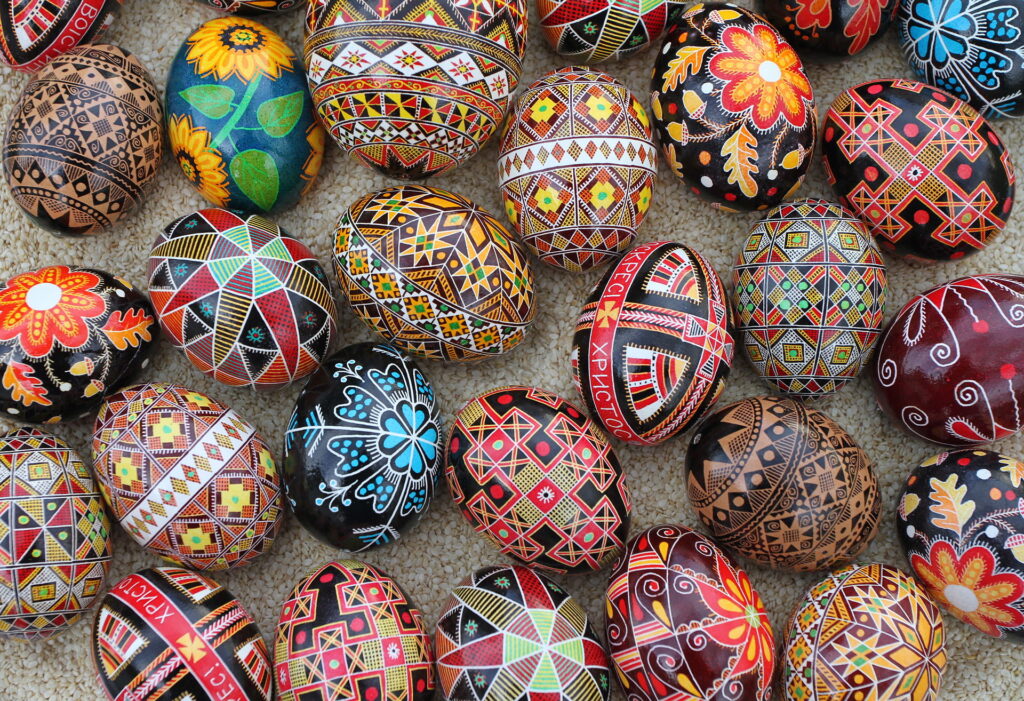
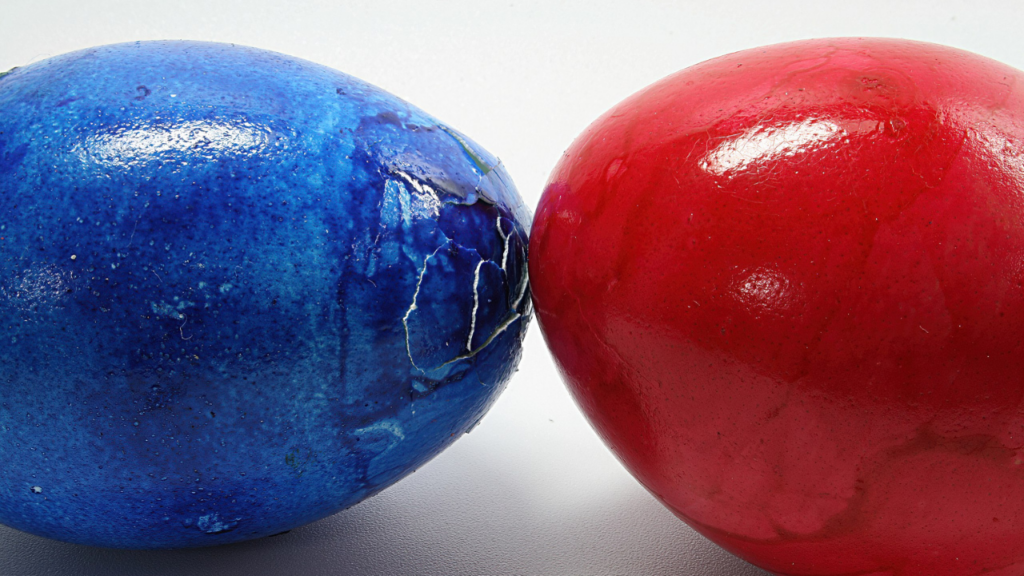
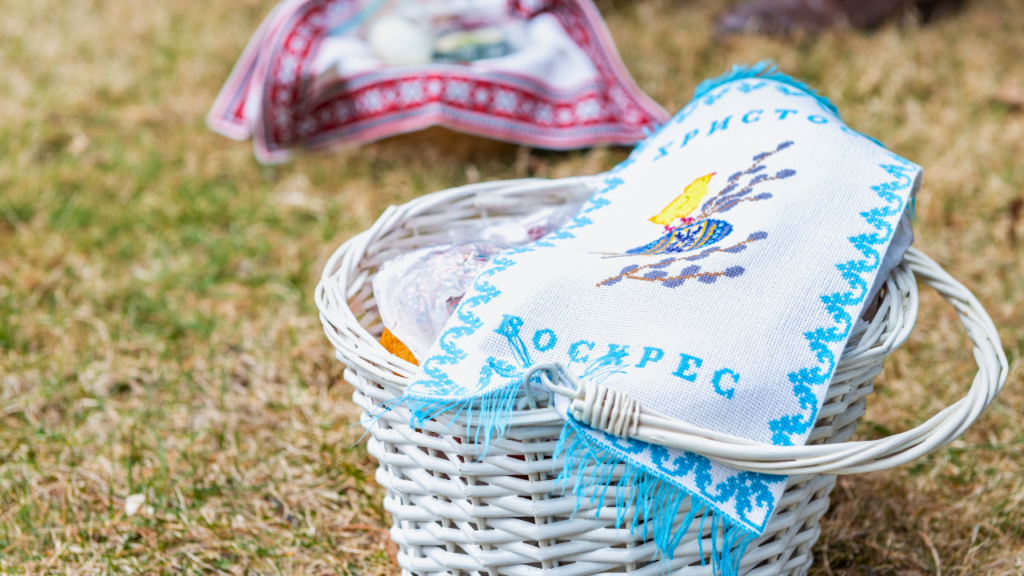
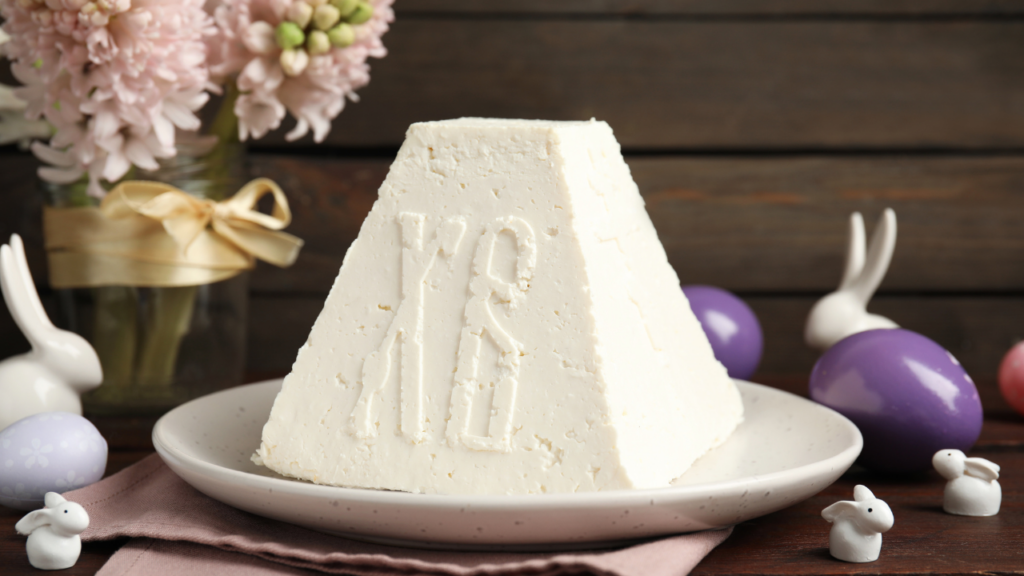
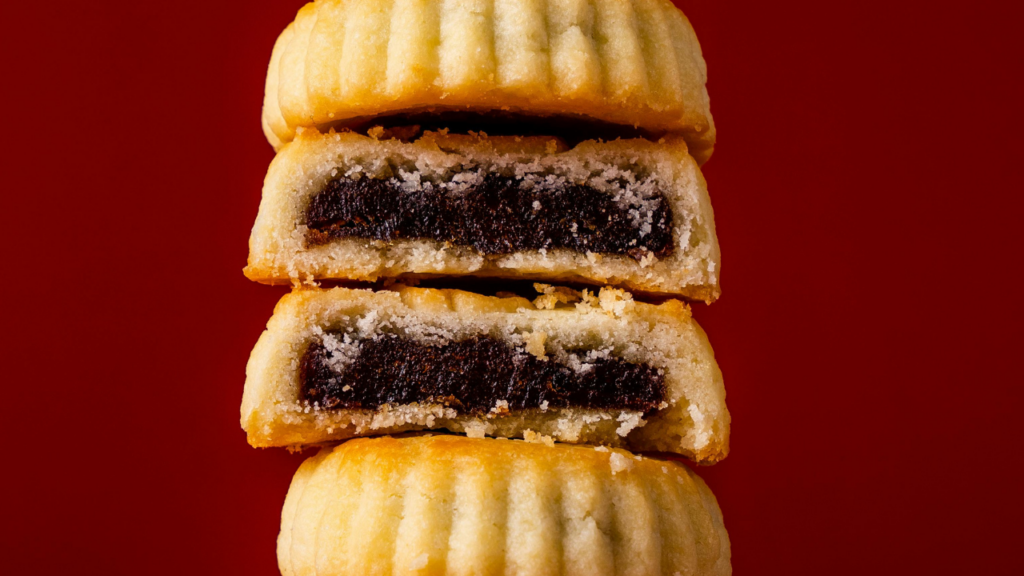

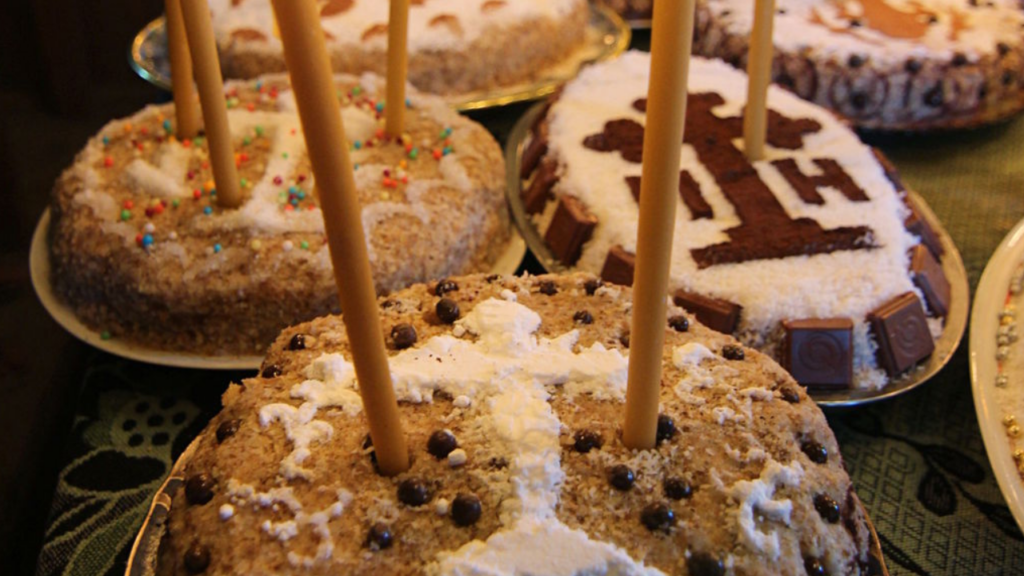
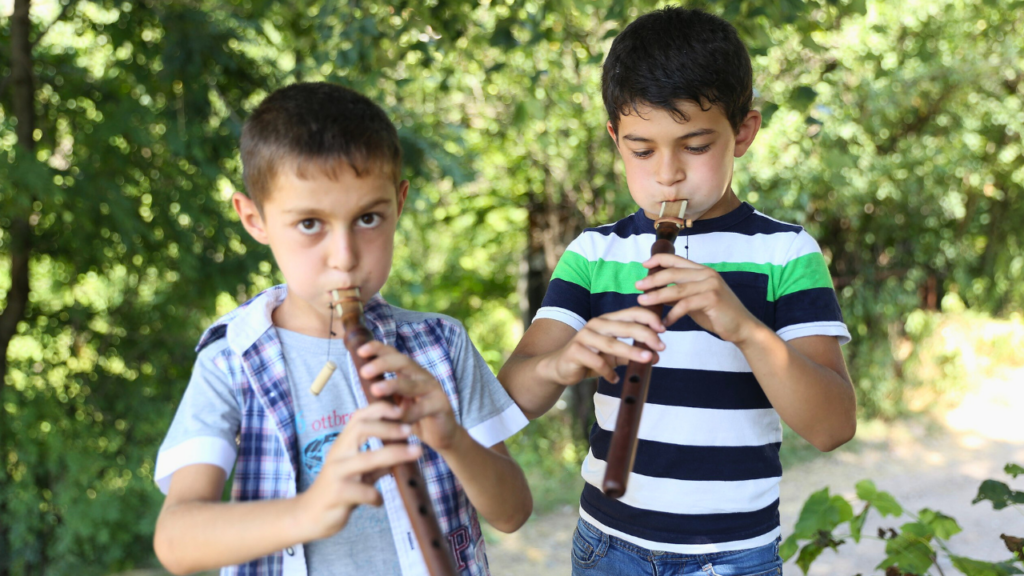
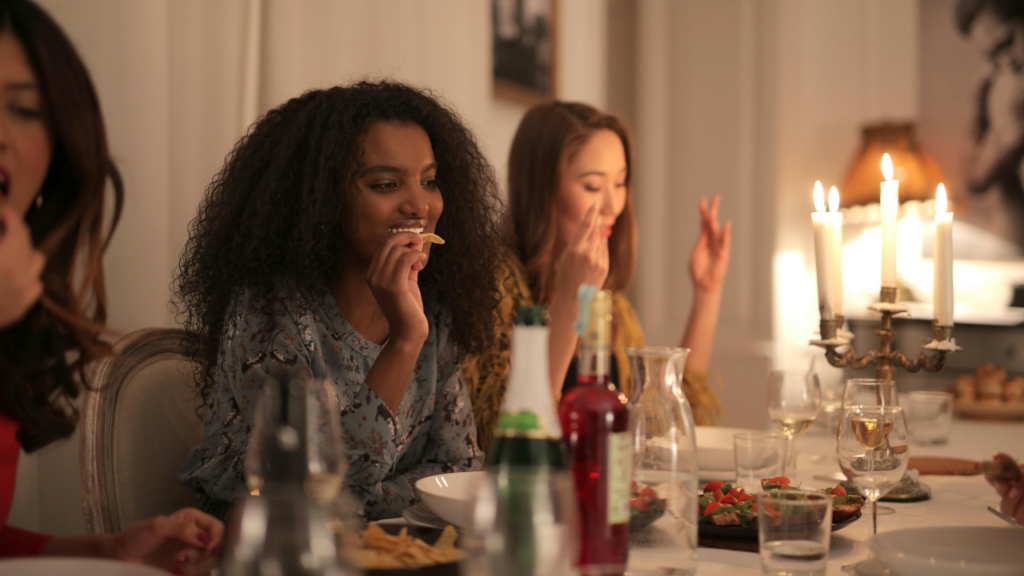
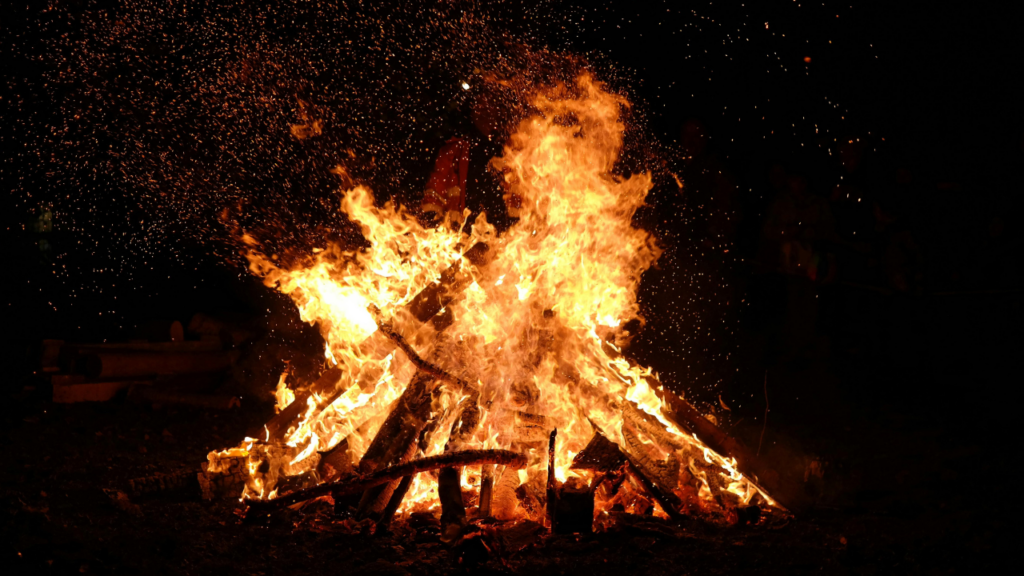
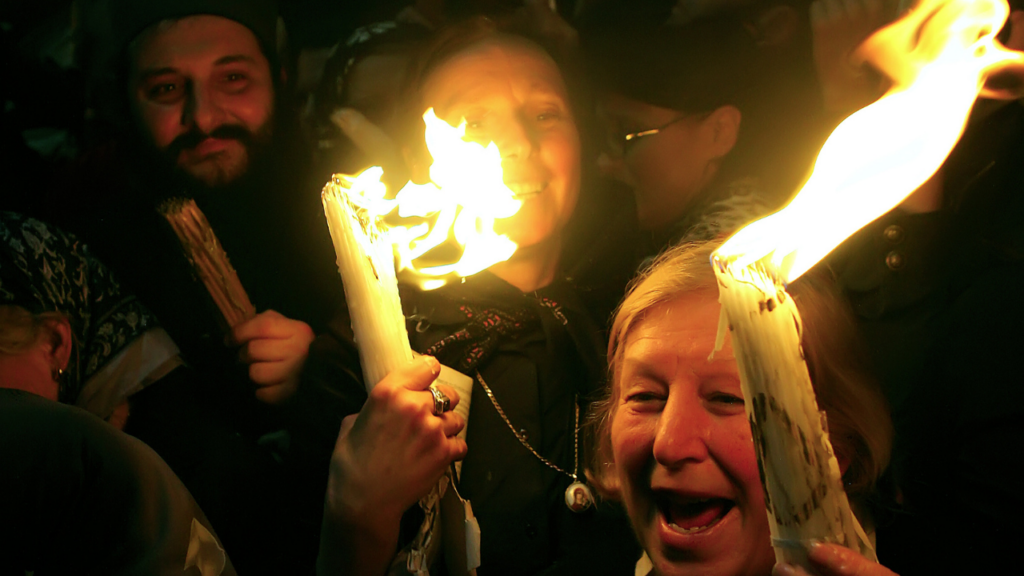



0 Comments